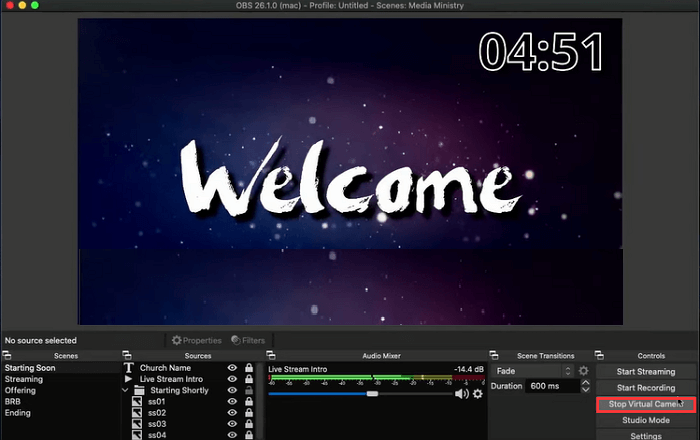

- Obs imac operating system how to#
- Obs imac operating system install#
- Obs imac operating system upgrade#
- Obs imac operating system software#
- Obs imac operating system password#
If the Black Screen pops up every time you try streaming, go to “Settings” and adjust the following features: While the default settings in OBS typically work like a charm, certain configurations may hinder online screen sharing.

Save the change and press ‘’F10’’ to exit the BIOS menu.

Since OBS offers several different screen capturing options, enabling the wrong one can sometimes result in glitching. The excess resources can lead to malfunctions, such as the Black Screen error.
Obs imac operating system software#
If a similar software runs in the background, OBS might clash with it and cause an overflow of metadata. While it can significantly improve the overall PC performance, overclocking can sometimes harm third-party software. System updates can also lead to compatibility issues. Since there are two OBS versions available (32-bit and 64-bit), the operating system might not support the one you installed. When sharing the entire screen with OBS, the PC can sometimes activate restriction mode and hide the display content. Sometimes the process can hinder the OBS software performance by interfering with the running mechanics. Your operating system has to determine whether to use the motherboard or a dedicated graphics card to allocate the resources of a particular game or app.
Obs imac operating system how to#
In this article, we’ll get to the heart of the matter while showing you how to fix it with step-by-step instructions. The error typically occurs during live streaming, and there are several possible causes. We’re talking, of course, about the infamous Black Screen. Updated December 2019: Everything is up to date through macOS Catalina.However, OBS isn’t immune to glitches, and there’s one particular issue that’s plagued Windows users.

If you have any more questions about reinstalling macOS on your Mac, let us know in the comments. How to set up and customize your Mac from scratch Questions? If you're starting from scratch, you'll need to set up your Mac from scratch. Your Mac will now go through the normal macOS installation process, eventually restarting.
Obs imac operating system password#
Enter your Apple ID and password if you're asked to, though you might not be.
Obs imac operating system install#
Obs imac operating system upgrade#


 0 kommentar(er)
0 kommentar(er)
